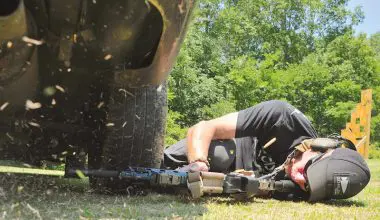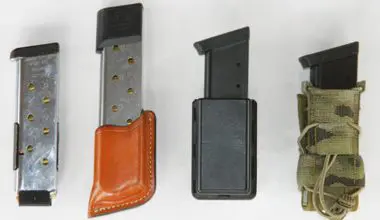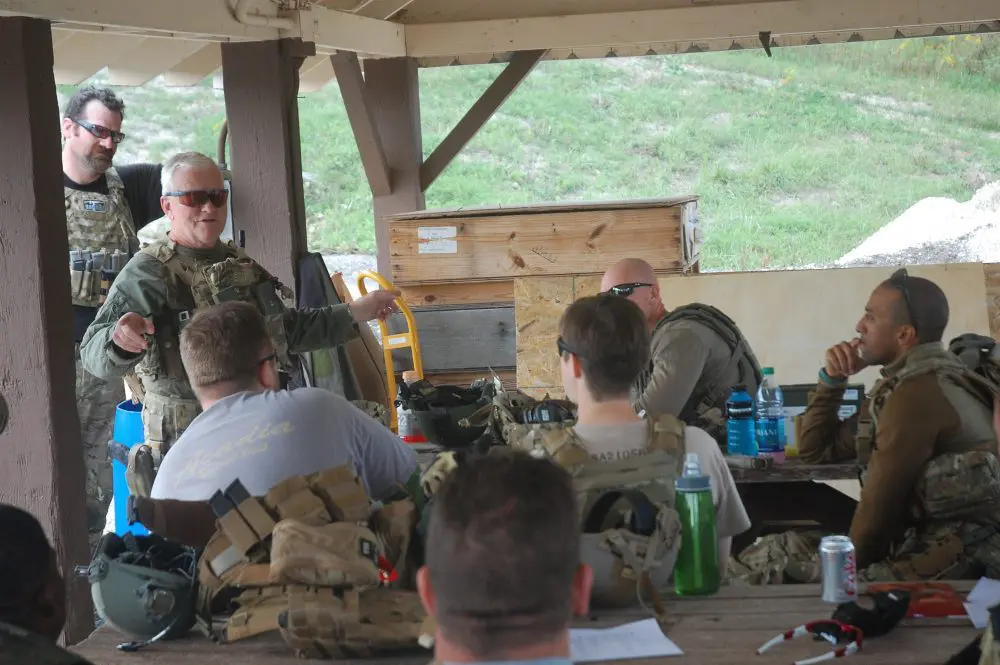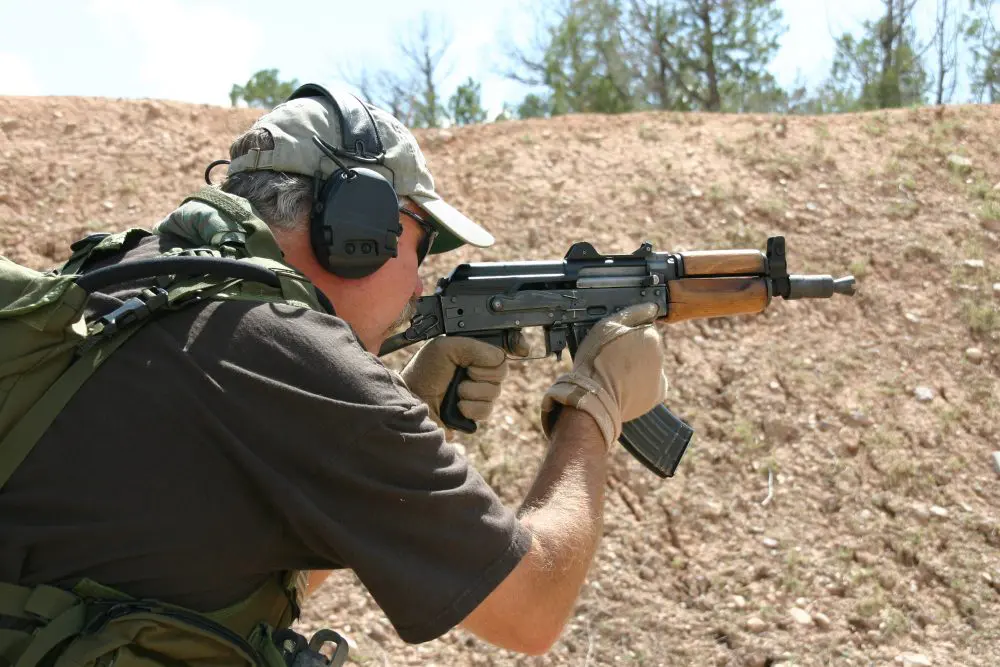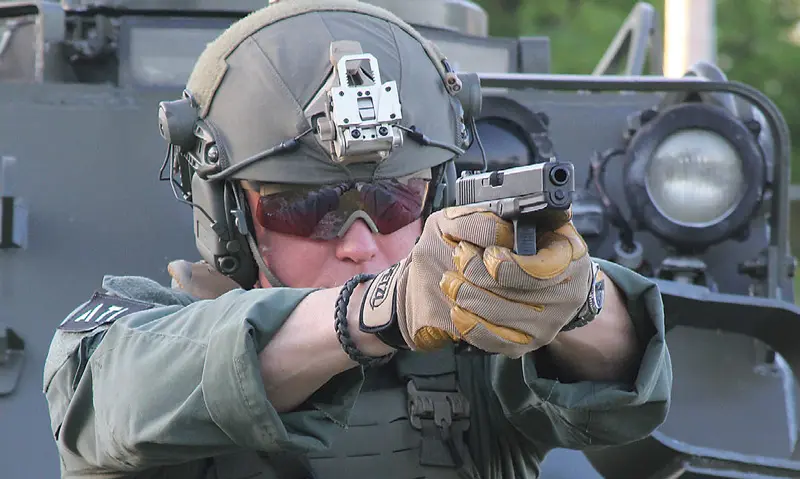 TWO shooters are on the hypothetical seven-yard line training. Shooter one is snatching the trigger at warp speed and doing his best to hang on to the pistol as his pistol bang-bang-bangs away barely in his line of sight, the rounds smiting his silhouette target hither and yon with a stray yonderbound.
TWO shooters are on the hypothetical seven-yard line training. Shooter one is snatching the trigger at warp speed and doing his best to hang on to the pistol as his pistol bang-bang-bangs away barely in his line of sight, the rounds smiting his silhouette target hither and yon with a stray yonderbound.
Shooter two is coolly and deliberately lining up the sights as if on the 1,000- yard line at Camp Perry, concentrating mightily and overlapping successive bullet holes in the dead center at 20-second intervals. A third shooter sets up beside them and begins his drills, blistering an eight-inch circle with three or more rounds drawn and fired well under two seconds, over and over. As shooter three runs his target in, shooter one asks him if he’s seeing his sights. He nods affirmatively while shooter two asks him how in creation he’s lining up the sights that fast. “I saw the front sight every shot and through the recoil,” says he, “but the sights never truly aligned.”
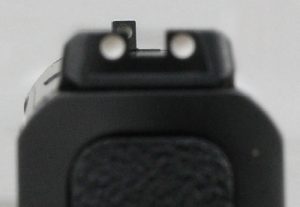
I’d venture to say that many duty shooters can sympathize with shooters one and two. One of the real peaks in the climb toward mastery of the service pistol is gaining the experience to know how little sight alignment is needed for a given shot, which exponentially increases the speed of breaking on the first “acceptable” sight picture.
Stepping back and cleaning up terminology, sight alignment is by definition the relationship between the front and rear sights that centers the front sight in the rear sight notch and aligns the top edge of the front sight with the top edge of the rear. Sight picture is the placement of the sights in relation to a target.
In the original Blackwater days (now ACADEMI), the instructors would hammer that shooting was often made to be overcomplicated. The only requirements are a steady gun, a sight reference to ensure alignment with the target, and pressing the trigger. There was a morning of shooting in the “steel alley” that had steel targets set in depth to the shooters for them to get a feel for what was termed “sight management” or the level of alignment necessary for the hit.
The drill was run with an emphasis on speed. Time for the hit stretched as the distance did to the targets, with the instructors demoing some blazing runs. This was a great learning tool for many shooters, as the steel provided instant feedback at different distances and shooter speeds.
Table of Contents
TOO MUCH OF A GOOD THING
However, much training (most?) focuses on the classic, textbook-perfect alignment of front and rear sights. I had been behind the gun for almost two decades and had completed many formal classes before an instructor asked me to purposely move the front sight in the notch to the inside edge of the rear with the pistol trained on the target center (imperfect alignment but correct sight picture) and to note the impact on a clean target.
This was repeated to the other inside edge. The impacts were well within the eight-inch zone being used at seven yards. This knowledge freed the students to accept a more liberal “flash” sight picture in Cooper terms and gain speed. It was a “Eureka!” moment of insight that I wish had happened years earlier.
The traditional approach emphasizes the ideal and doesn’t necessarily connect the “good enough” alignment to its actual shot placement, leaving the student to overanalyze and refine the sights within the most likely engagement ranges, adding time that may exceed situational demands.
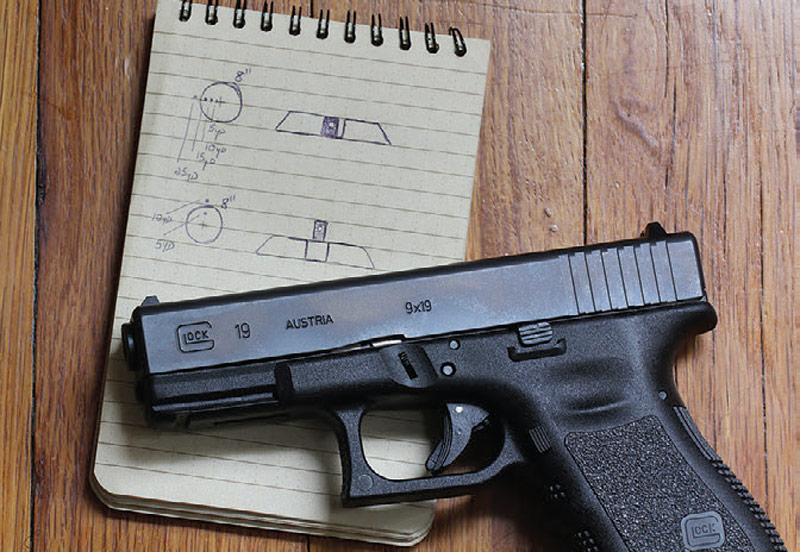
I’ve known several shooters who came into training from serious competitive bullseye backgrounds. With an absolute surplus of accuracy skill at distance, these men were nevertheless handicapped up close. Their brains would not release the shot with other than picture-perfect alignment due to the bazillion hours spent training for just that.
Far less skilled shooters were spanking them on speed drills up close, an ironic situation brought on by the old hands overdoing it. One found that he had to pick the front sight up out of the notch and get his vision slightly over the pistol to overcome what is now often called a training scar.
Shooting steel helps but is also an indirect connection that requires the shooter to mentally capture the level of alignment and associate it to the hit. It is not terribly surprising that many shooters resort to “smoke and hope” or point/index methods to gain speed as the distance closes. Adding stress to the use of it can lead to inconsistent or insufficient results.
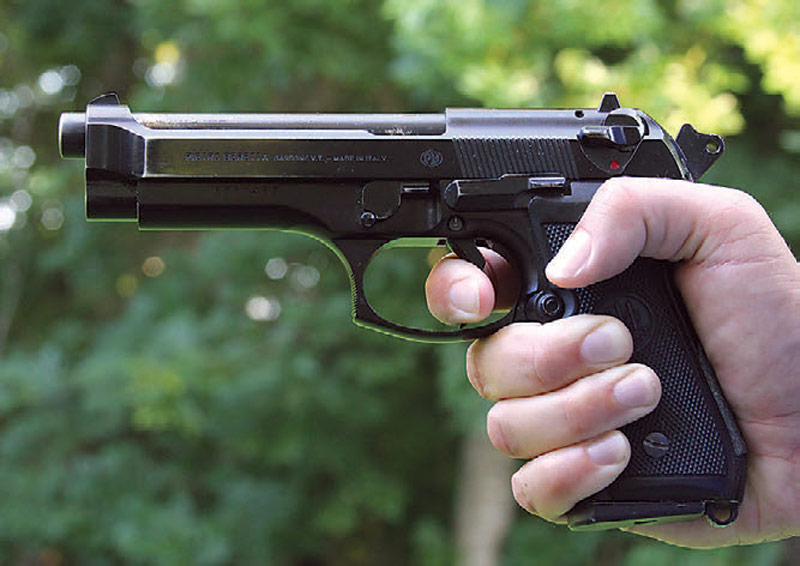
IF YOU DIDN’T WRITE IT DOWN, IT DIDN’T HAPPEN
There is a reason that snipers and competitive marksmen are absolutely obsessive/compulsive about their data books. A quick scan through the pages usually calls up the hard-won experience and data solution to a given problem that is similar. While it is good for a shooter to know that sloppy alignment of sights is probably okay within spitting distance, it is better to know how far and how much.
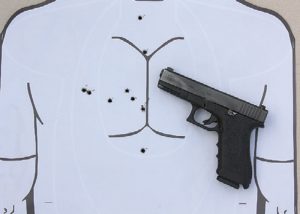
For example, I took my Smith & Wesson M&P9C and logged the results at five-yard intervals, since it is often a carry gun for me. At each interval, I nudged the front sight over to meet the inside edge of the rear while keeping the sight picture centered, and launched a Black Hills +P JHP. I carefully marked, measured and logged the results.
The impacts at five yards were only an inch off center—hardly a deal breaker. The ten-yard hole measured two inches out, while the 15-, 20-, and 25-yard strikes showed a three-, four-, and five-inch shift, respectively. This was with the standard factory night sights.
Curious, I moved the front sight so it was barely visible in the notch, aligned to the vertical but overlapped almost entirely behind one “ear” of the rear notch. The shift with this arrangement was 2¼ inches at five yards and 4¼ inches at ten, showing that hits can happen up close with almost no sight in the notch.
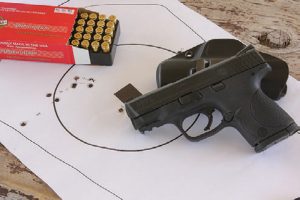
I wanted to get a full-size service pistol perspective on the exercise and broke out a Glock 17 with some Hornady Critical Defense JHPs and repeated the drill. There was almost no difference from the compact’s results out to 20 yards, and the difference at 25 was within the margin of error of the pistol’s accuracy at that range.
I also tried pushing the front sight as high as possible, lining up the base of the front with the top of the rear notch. This yielded approximately 2½ inches of vertical shift for every five yards. Bottoming out the front sight so the tip was barely peeking over the notch bottom resulted in bullet holes four inches to six o’clock at ten yards.
My results suggest a rule of thumb of approximately one-inch shift per five yards of distance, but each shooter should see for themselves. There is a decent variation in widths of front sights and rear sight notches and in how different eyes perceive things, all of which affect the shift.
The sight radius can also have an impact, assuming the widths of the sights and notches are similar. But the difference isn’t as great as one might assume. Laying out the common full-size service pistols, there is surprisingly little variation in sight radius, with the difference being negligible among the main players.
SO WHAT?
How does this apply and become useful, you ask? Fair enough for an unusual shooting exercise and data drill. There are plenty of occasions when a shooter struggles to maintain the idyllic sight alignment that speaks of X-ring hits at distance. For those carrying a snub revolver or double-action service pistol, stroking through the long, heavy trigger stroke while maintaining perfect sight alignment is a chore, especially at speed or under stress.
Knowing that the front sight can essentially bob around in the notch or possibly even leave it slightly provides a level of confidence to run the handgun more aggressively under control for those who have tested the limits. Ditto for shots on the move to a close or larger target.
This is one of those areas where the average or learning shooter tends to slow so far down in order to dress up the sights that “moving” is more figurative than practical. Worse, and just as common, the shooter tenses while moving as the sights momentarily align and executes a trigger snatch of epic proportions, missing the target.
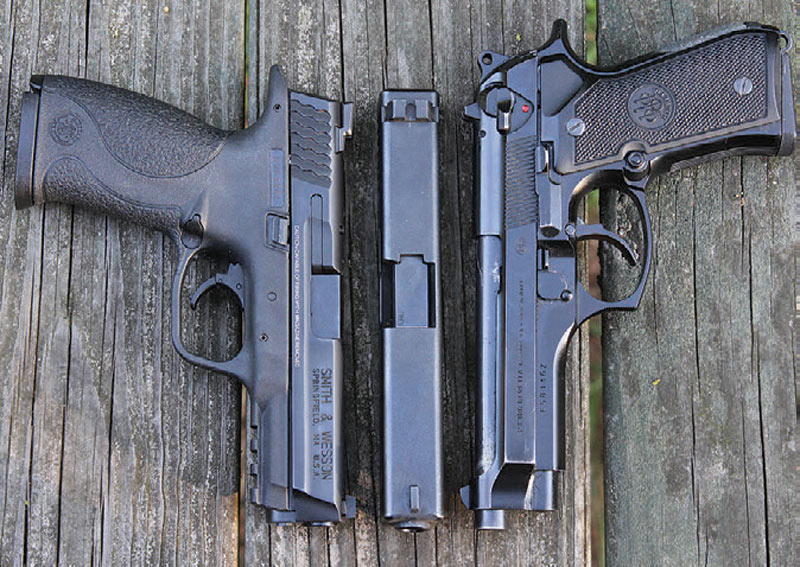
Transitioning from carbine or sub gun to a pistol is another of those areas where the handgun never seems to present with the sights as cleanly aligned as when deliberately drawing the handgun as a primary weapon, especially when reacting to an unexpected stoppage. Understanding what one can get away with for sight alignment allows the shooter to move at a speed more appropriate to the situation while still being able to press the trigger smoothly and expect hits.
Once a shooter has logged the results of different levels of sight alignment, even dry fire improves. Short of the knowledge of what you can get away with, you are largely guessing in pushing any kind of dry-fire speed that results in shots breaking with the sights slightly out of line. When you know the limits, the front sight can bobble as required, with the repetition being mentally logged as “good enough” instead of a signal to slow down.
FINE PRINT
There are caveats. Being able to get away with going ugly on the sights assumes that the trigger press is consistent and decent. If a shooter is inconsistent in getting a clean break on the trigger and prone to the “snatchies,” better sight alignment is probably the better route.
While a shooter is observing and logging the effects of bad sighting, there is merit in checking out just how much whatever version of yanking, slapping, or cranking the trigger is moving the impact, so that knowledge translates to power.
Even more important, a shooter must interpret the data. It is likely the data will show that somewhere between 15 and 20 yards, the balance tilts decidedly toward correct sight alignment. “Equal Light/Equal Height” and a careful trigger press to keep it that way until the shot is released put the holes where they belong at distance.
If your log is showing a five-inch shift at 25 yards with the front sight kissing the edge of the rear, the answer is a perfect alignment of the sights undisturbed by the trigger press to hit the “A” zone that far out and beyond.
Even as the pistol inevitably sways across a small target at distance, if the sights are perfectly aligned, an inch of movement at the shooter translates to only an inch out on the target end.
Conversely, if the shooter puts a smackdown on the trigger in trying to force the shot as the sight picture crosses the X-ring, the resulting misalignment of the sights will do as the log predicts and send the shot wide.
After logging the results and carefully interpreting them, I was able to improve both dry- and live-fire practice and get a bump in my performance. I now make “going ugly early” a part of practice to reinforce what the limits are.
Highly recommended!

